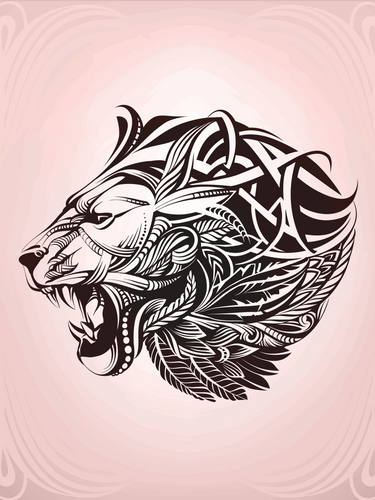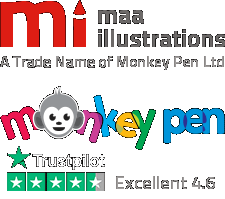Technical illustration emerges as an essential tool that promotes efficiency and ensures safety across many stages of machinery's lifecycle in the complex world of industrial machinery, where accuracy and safety are paramount. Technical illustrations act as unseen heroes behind the scenes, boosting comprehension, lowering errors, and maximising the performance of complicated industrial machinery from conception and design to production, operation, and maintenance. Here, we explore the significance and diverse applications of technical illustration in the domain of industrial machinery.
Engineering and Design
Technical illustration is crucial to the design and engineering phases of new industrial machines. Technical illustrators work together with engineers and designers to develop concepts at the outset of any industrial machinery project. Their detailed renderings aid in the visualisation of intricate mechanical systems and parts, aiding brainstorming sessions and design assessments. Technical illustrations make sure that every aspect is painstakingly prepared and evaluated before a single part is created, thereby decreasing design errors and misunderstandings.
Prototyping and Testing
Industrial equipment frequently goes through several revisions and difficult testing before it is declared fit for production. Technical artists produce intricate illustrations that help with prototype construction and convey testing procedures. Every part and mechanism must be painstakingly planned and integrated for maximum performance, which is why engineers and designers use technical graphics to visualise and express complex machinery concepts.
Assembly and Installation
Technical drawings are used to direct the construction and installation of industrial machinery at a factory or facility. Precision is crucial when it comes to the construction and installation of industrial machines. When assembling complex machinery, technical pictures act as useful aids by giving thorough, step-by-step instructions. These images reduce assembly errors, speed up production, and are especially helpful in fields where the highest degree of accuracy is required, like aerospace and automobile manufacture. By ensuring that each component is properly placed, aligned, and linked, these visual instructions lessen the possibility of assembly mistakes and safety issues.
Operation and Maintenance Manuals
Industrial equipment needs routine maintenance and occasional repairs to function properly, much like any complicated system. In maintenance manuals and repair manuals, technical illustrations are becoming crucial elements. Technical illustrators create clear pictures that are easy for operators and maintenance staff to follow while they perform startup, operation, regular maintenance, and troubleshooting processes. Using these visualisations, professionals are better equipped to precisely perform maintenance chores, run diagnostics, and quickly identify components. Reduced downtime, increased output, and cost savings are the results of this.
Training and Education
The primary issue in industrial environments is safety. The development of safety manuals and training materials that instruct employees on safe operating procedures heavily depends on technical drawings. These illustrations offer crystal-clear explanations of potential risks, emergency procedures, and safety measures. Technical illustrations play a crucial role in lowering the risk of accidents and injuries by improving knowledge. In order to construct safety manuals and training materials that inform employees about safe operating methods, technical illustrations are employed. These illustrations make potential risks, emergency procedures, and safety precautions clear, lowering the possibility of accidents and harm.
Quality Control and Inspection
In industrial machinery, quality control is continuously pursued. By offering detailed views of the parts and specs, technical illustrations are useful. The precision of manufactured components and assemblies is checked by quality control inspectors using these visuals to guarantee that each item complies with strict quality standards. These images are used by inspectors to confirm that manufactured components and assemblies are accurate.
Identification of Spare Parts
Replacement parts are inevitably required when industrial gear matures. Technical designs save the day by making it easier to identify the right replacement parts. These drawings provide accurate representations of parts and part numbers, ensuring that maintenance and repair tasks are carried out with the appropriate parts, reducing interruption, and increasing operational effectiveness.
Localization and Global Distribution
Machinery is traded internationally in the modern industrial sector. Language and cultural limitations must not be an obstacle for technical illustrations. By ensuring that consumers everywhere can access and understand essential data, localisation of drawings promotes global cooperation and standardisation. The localization of drawings guarantees that consumers can access and comprehend crucial information from anywhere in the world.
Product Documentation
The basis of product documentation is technical illustrations. They add graphic representations of ideas, procedures, and technical details to written descriptions, completing them. This not only improves the documentation's readability but also gives users and technicians a useful resource.
In conclusion, technical illustration, with its accuracy and clarity, is essential to the industrial machinery industry. Technical illustrations help to clarify concepts, speed up procedures, and increase the efficiency and safety of industrial activities from the earliest design phases to manufacturing, operation, and maintenance. Technical illustration is a key component in the creation and application of sophisticated industrial machinery in a field where accuracy and safety are priorities.






